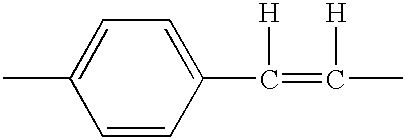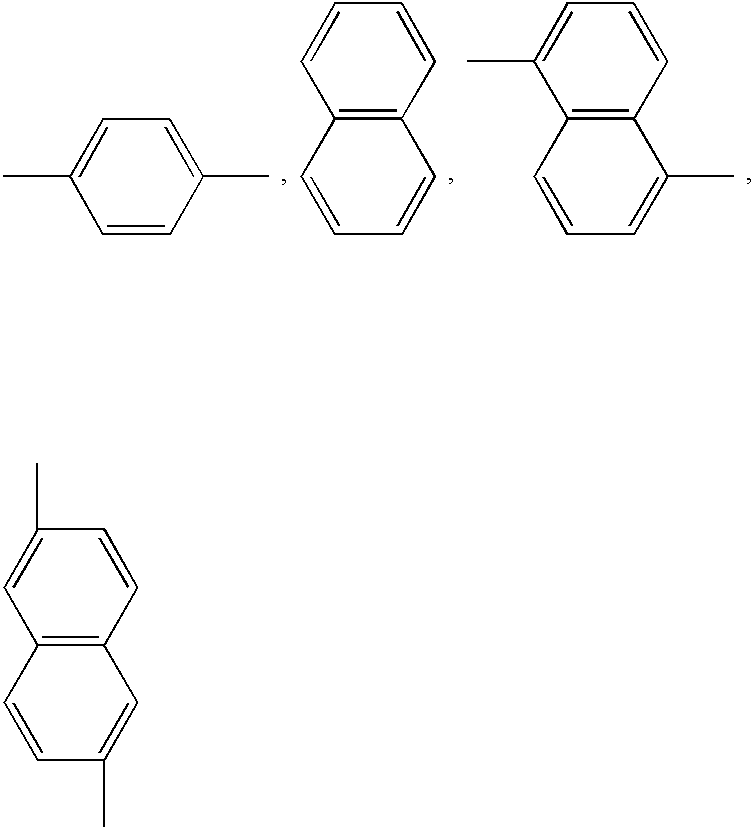Composite fiber blends
a technology of composite fiber and fiber blend, which is applied in the field of carbon fiber-containing fiber blends, can solve the problems of not being able to prepare articles with 90.degrees in many instances, and achieve the effects of good draping properties, good wetting of carbon fiber, and good wetting
- Summary
- Abstract
- Description
- Claims
- Application Information
AI Technical Summary
Problems solved by technology
Method used
Image
Examples
example 1
A liquid crystal polymeric (LCP) fiber tow based upon a copolymer prepared from 6-hydroxy-2-napthoic acid and p-hydroxy benzoic acid was obtained. The LCP had a density of 1.4 g / cc, and the tow itself was formed of 660 filaments (2.25 denier per filament). The tow had an initial modulus of 5670 gms, a tenacity of 10.5 g / denier, and an elongation of 2%. The second fiber to be used for intermixing with the LCP fiber was Celion 3000 carbon fiber (3000 filament count), having a density of 1.7 g / cc, a tensile strength of 515.times.10.sup.3 psi, a tensile modulus of 34.times.10.sup.6 psi and an ultimate elongation of 1.5%. The carbon fiber is produced from a polyacrylonitrile precursor and is available from Celanese Specialty Operations, Hercules and Union Carbide.
Bobbins containing the LCP polymeric fiber tow and the Celion fiber tow were spaced apart on a bobbin rack. Fibers from both bobbins were fed onto and separately wrapped around a Godet roll, so that upon mixing the mixed tow wou...
example 2
Utilizing the same carbon fiber as described in Example 1, an approximate 50% by volume polybutylene terephthalate (PBT) / carbon fiber blend was prepared. The polybutylene terephthalate material had a density of 1.34 g / cc and a denier of 1520 g / 9000 m. The polybutylene terephthalate had a draw ratio of 2.25-1, an initial modulus of 24 g, a tenacity of 5.3 g / denier, an elongation of 28%, a melting point of 227.degree. C. and a denier per filament of 2.7. Seventeen packages of 33 filament count yarn were employed on a creel, and all packages were merged into a single polybutylene terephthalate fiber tow on a Godet roll. Maintained separately, but on the same Godet roll, was one package of 3000 filament count carbon fiber to provide a total approximate blend of 50 / 50 by volume carbon fiber / PBT.
The polybutylene terephthalate tow was fed through a fiber comb having approximately 30 teeth, while the carbon fiber tow was fed through a gas banding jet operating as described in Example 1, at ...
example 3
An approximate 50 / 50% by volume blend was prepared based upon the carbon fiber described in Example 1 and a polyether ether ketone (PEEK) thermoplastic polymer. The fiber prepared from the PEEK had a density of 1.3 g / cc, a melting point of 338.degree. C., an initial modulus of 53 grams, a tenacity of 2.7 g / denier, an elongation of 63%, and in 10 filaments per package tows a dpf of 367 (g / 9000 m). Four (10 filaments per package) tows were placed on a creel and the fibers were blended together on a Godet roll, but maintained separately from the carbon fiber which was also wrapped around the Godet roll. The PEEK fiber was then directed through a fiber comb as described in Example 2 and into a gas banding jet. The carbon fiber after leaving the Godet roll also entered a gas banding jet. Both jets were operating at a pressure of about 3 psi. After leaving the jets the fibers were intermixed above and below two parallel, longitudinally extended rods and fed through a second parallel fiber...
PUM
| Property | Measurement | Unit |
|---|---|---|
| melting point | aaaaa | aaaaa |
| melting point | aaaaa | aaaaa |
| melting point | aaaaa | aaaaa |
Abstract
Description
Claims
Application Information
 Login to View More
Login to View More - R&D
- Intellectual Property
- Life Sciences
- Materials
- Tech Scout
- Unparalleled Data Quality
- Higher Quality Content
- 60% Fewer Hallucinations
Browse by: Latest US Patents, China's latest patents, Technical Efficacy Thesaurus, Application Domain, Technology Topic, Popular Technical Reports.
© 2025 PatSnap. All rights reserved.Legal|Privacy policy|Modern Slavery Act Transparency Statement|Sitemap|About US| Contact US: help@patsnap.com



